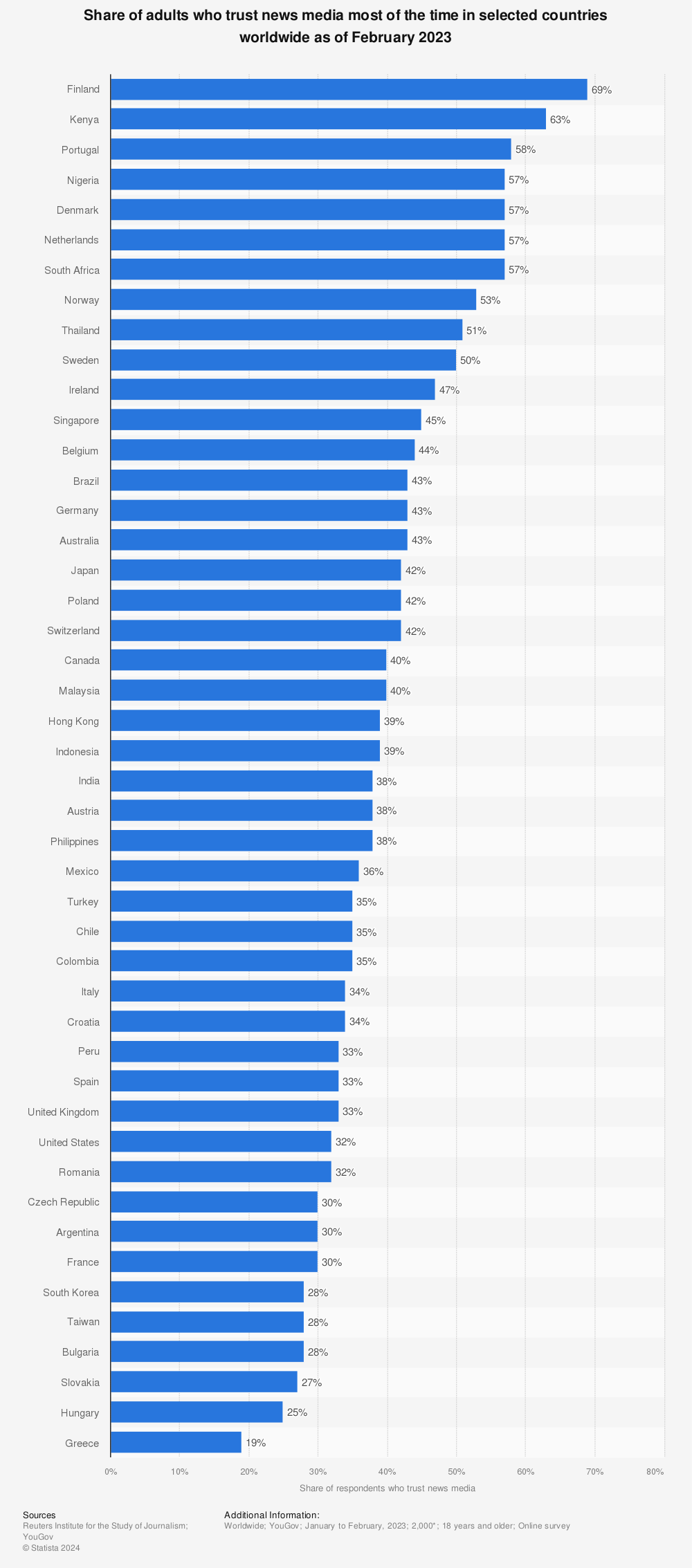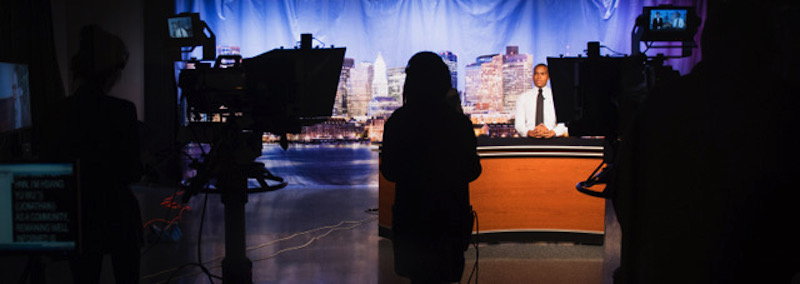Quarant-TV: How Traditional Outlets Can Win in an Age of Uncertainty
The coronavirus pandemic has devastated many industries. But according to recent statistics, TV news isn’t one of them. In fact, this challenging circumstance may be just the wakeup call stations need to reverse dwindling viewership and breathe new life into the medium.
Audience research and consulting firm SmithGeiger has been working with Northeastern’s Reinventing Local News Project (RLTVN) for more than a year, helping reporters and researchers understand the status of local television news across the United States. And while much can be learned from the trends the team uncovered in 2019, 2020 has been a year like no other for journalism. In the midst of a global pandemic, much less national unrest over police brutality and a monumental presidential election, access to accurate and actionable information has never been more essential. News consumption is shifting before our eyes, and local television reporting may have a real opportunity to restore and expand its role in that landscape.
We sat down with SmithGeiger’s president, Seth Geiger, who noted that COVID-19 is having “unprecedented” effects on media consumption patterns. “It’s brought … the country together in terms of what they’re attending to and for how long it’s lasting,” he says, comparing the pandemic to an extreme weather event. “It’s not something that made landfall … and then moved on.”
Geiger notes that, in the spring, some 85% of Americans had been personally affected by Covid-19, a figure which has only risen in the months since. This has led the public not only to follow the news more closely in that time period, but also to actively search for new information more frequently. The result: more than 90% of U.S. adults are regularly interacting with the news, whether it be on linear TV, streaming services or on social media. And a poll by the American News Pathways Project conducted in April suggested that around 84% of Americans were following local news about the outbreak at least as watchfully as at that national level.
But not all these alert eyeballs are directed at the television. About one in five U.S. adults now get their political and election news primarily through social media, according to a recent study from Pew Research Center. Those Americans are less likely to get accurate facts about stories such as the coronavirus and politics through their personal feeds. And as controversy surrounds the fact-checking responsibilities of platforms like Facebook and Twitter, it seems that in an ideal world, viewers would be able to determine for themselves what can be considered trustworthy. There’s only one problem: we can’t.
“Social [media] is the highest frequency destination, but the more you use social and in particular, the more you use Facebook, the less you trust your place in it. It’s a completely different dynamic than you place on the news,” Geiger says.

This fragmented landscape is hurting viewers’ trust: in February 2020, a survey revealed that the U.S. lagged significantly behind nations in every corner of the globe in terms of trusting the press, with just 29% of Americans surveyed saying they believed they could “trust most news most of the time.” This low evaluation of media is consistent with Gallup’s finding in 2018 that most U.S. adults had “personally…lost trust in the news media in recent years.”This loss is underscored by the recent finding that national cable news is dividing people on the basic facts of the pandemic.

Find more statistics at Statista
However, the same poll showed that almost 70% of Americans believe that trust can be restored. A report from the Knight Foundation found that the vast majority of Americans agree that the news media is “critical” or “very important” to democracy.
Enter local TV news. The Reinventing Local TV Project’s ultimate goal is to restore the medium to a more historically normal level of trust, and it seems there’s no time like the present.
Of the press more generally, local outlets are more likely to be trusted, particularly in Black communities. And maintaining a local stronghold on television could be one route to replacing the draw toward manipulative Facebook groups and pages that prey on divisions of politics and identity with genuine community engagement.
In 2019, Pew Research found that while almost nine in 10 Americans get at least some local news digitally, “an overwhelming majority… say it is at least somewhat important for journalists to understand their community’s history (85%) and to be personally engaged with their local area (81%).” A Dynata study released in the spring confirmed that during a global crisis, U.S. adults want local information, and that broadcast TV was by far their preferred way of getting it. That trust was shown to extend to online platforms like websites and apps run by local TV stations, outpacing cable news and government websites by a significant margin.
The challenge and opportunity for local television stations, then, is to embrace their strengths as trusted sources of more granular information while strategically embracing digital platforms. So, what’s the recipe for local TV news to win in the age of uncertainty? We’ve compiled a list of findings from the RLTVN’s first wave, combined with some takeaway trends from 2020.
1. To increase audience engagement on hard news stories, prioritize animation and sound design.
In the first phase of the Northeastern research project, researchers discovered that adding animation and sound work to stories significantly increased viewer engagement, particularly for hard news. This finding is the guiding light for the research project’s second phase, which will be examining how animation and motion graphics can add value to several different types of stories in an a-block. If your station has someone who can animate, make use of their skills. If not, consider hiring a “visual content producer” to help turn visual elements around quickly.
Covid-19 has presented a variety of challenges and opportunities for visual communication. Contact tracing, “flattening the curve,” social distancing, and the pathology of the virus itself are all difficult concepts to grasp without a visual aid. In some cases, these visuals need to be scientifically accurate. Consider adding data visualization where possible and consulting scientists and health professionals on technical visuals.
2. Present stories with a more conversational style.
Most people who regularly tune in to regular TV and radio broadcasts do so for hosts they know and love. Personality-driven content never goes out of style, and while viewers may disagree on how much of their personal opinion a journalist should divulge, most agree that the warm feeling of community their local station gives them is a reason to come back for more. The RLTVN project confirmed in the first phase of testing that when the same story was presented with two different narrative styles, the more conversational tone was often preferred.
3. From authority to authenticity: Include informal video elements.
It’s no secret that Millennials like selfies, and User Generated Content (UGC) overtook TV as early as 2014 with this group. While high production value increases an outlet’s trustworthiness, younger viewers may not feel like they’re getting the whole story if they never see who’s operating the camera. Enter “extreme transparency”. Include behind-the-scenes, outtakes, natural sound, host personalities, and user-generated content where appropriate. Authenticity is the “retail and brand trend for the 2020s,” according to Ipsos. In the age of “fake news,” where better to apply it than non-fiction storytelling? The Northeastern project researchers have suggested moving from the overarching idea of authority to authenticity, in terms of tone, production values, and story framing.
4. Give as much context as time and reporting resources allow.
Last year, RLTVN researchers found that viewers want more context for the stories they see. This hunger has only grown as Covid-19 and election disinformation has sprung from quotes, statistics, and assertions taken out of context. Giving more background information takes time, but it may pay dividends in viewer loyalty and recommendation.
5. Carve out a reliable web presence, and don’t shirk social.
While television remains––by just a hair––the leading news source for most Americans, 25% choose to stay informed via a news website or app, while 18-20% rely primarily on social media to stay up to date with current events. And even if someone doesn’t report getting their news primarily from social, they are likely devoting at least part of their day to consuming content there––72% of the public now uses some type of social media. In the first phase of the RLTVN project, the research team uncovered that showing authenticity on social media platforms builds stronger relationships between news stations and the communities they serve. The benchmark for that trust is significantly higher on social than traditional media, however. News stations can succeed by maintaining their brand integrity across platforms and using their platform to amplify other trusted voices, especially to communicate in a crisis situation.
Geiger recommends that stations stake out their social media presence with clear branding: “The challenge for these stations is to put meaningful content in that social media environment, but to also have their brands… front and center so they’re not sucked into what’s almost a wild west,” he advises.
And finally…
6. Balance emotional impact with viewer fatigue.
In 2019, the RLTVN project noted that stories with higher emotional impact garnered more attention. No surprise there, perhaps. But in 2020 the landscape may be shifting. “There’s not news avoidance, but there’s fatigue,” Geiger says. “So before when news may have been a morning to night almost addictive act in that early phase, now it’s ‘I’m going to check-in, get what I need and move on.’”
It’s now clear that media outlets are mirroring, if not directly responding to, the changing habits of their audiences, as Northeastern professor Rahul Bargava noted in this recent analysis. While highlighting a story’s emotional impact is important, selecting stories likely to elicit a range of emotions may be a better strategy. In other words…
Go ahead and cover that pet adoption trend. We all need some puppies right now.
- Quarant-TV: How Traditional Outlets Can Win in an Age of Uncertainty - December 2, 2020





